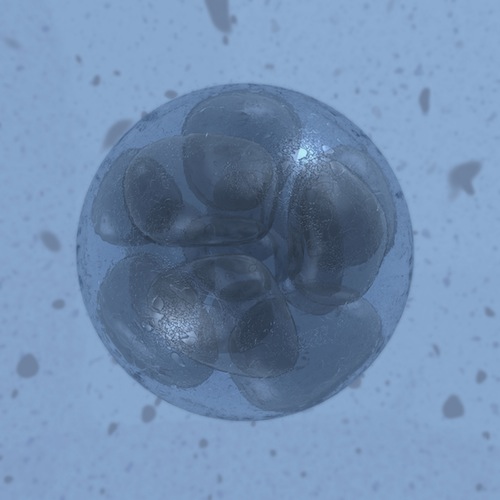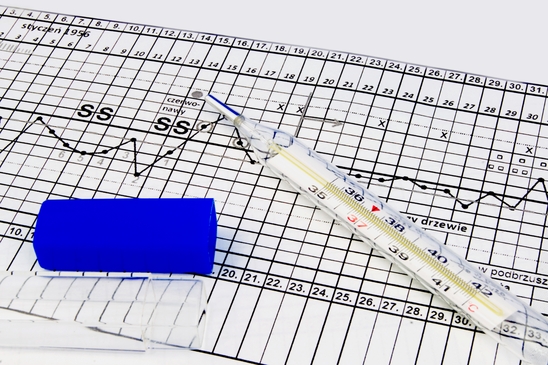The most common and successful option for a woman with cancer is freezing an egg or embryo before undergoing chemotherapy or radiation. Once the patient decides she is ready to get pregnant, she is given estrogen and progesterone to prepare the lining of the uterus. The embryo is then thawed (or the egg is inseminated) and transferred into the uterus. Success rates specifically for cancer patients have not yet been studied. But in vitro fertilization (IVF) rates are around 50 percent for women younger than 35.
Tag: uterus
Breakthrough for IVF? Selecting the Most Promising Embryos
 A recent study in Reproductive BioMedicine Online on 5-day old human blastocysts shows that those with an abnormal chromosomal composition can be identified by the rate at which they have developed to blastocysts, thereby classifying the risk of genetic abnormality without a biopsy. In a new study the same group has undertaken a retrospective study, using their predictive model to assess the likelihood of any embryo transferred resulting in a successful pregnancy, with very encouraging outcomes.
A recent study in Reproductive BioMedicine Online on 5-day old human blastocysts shows that those with an abnormal chromosomal composition can be identified by the rate at which they have developed to blastocysts, thereby classifying the risk of genetic abnormality without a biopsy. In a new study the same group has undertaken a retrospective study, using their predictive model to assess the likelihood of any embryo transferred resulting in a successful pregnancy, with very encouraging outcomes.
One of the greatest challenges in assisted reproduction is to find the one embryo, which can develop successfully. Now, combining time lapse imaging of IVF embryos cultured for 5 days to the blastocyst stage with trophoblast biopsy, it has proved possible to correlate the rate of blastocyst formation with chromosomal abnormalities. Such an approach should allow early and widely accessible non-invasive identification of the best embryo to place in the uterus. Read full article…
Hysterectomy Not Tied to Heart Risk Factors
Despite evidence suggesting that women whose uterus has been removed may be more likely to experience heart troubles, a new study finds that the usual signs of heart disease risk are not more severe in middle-aged women after hysterectomy.
Turkish Uterus Transplant Patient is Pregnant
The first woman to have a successful uterus transplant from a cadaveric donor is pregnant, a hospital in southern Turkey said.
Another Painful Period…Or A Problem? Understanding Endometriosis
 For some women, painful periods are a part of life. But many women experiencing painful periods do not know their pain is signaling a larger health issue.
For some women, painful periods are a part of life. But many women experiencing painful periods do not know their pain is signaling a larger health issue.
Approximately 176 million women and girls worldwide are diagnosed with the chronic disease endometriosis. Many women do not know they have endometriosis because some can only be diagnosed through surgery.
In honor of National Endometriosis Awareness Month this March, we are seeking to empower and educate women on this disease.
The cause of endometriosis remains unknown, and a permanent cure may be difficult. Building awareness of this disease is critical in aiding effective diagnoses, pain management and infertility treatment for women.
What is endometriosis?
Every month during menstruation, a woman sheds the endometrial lining in her uterus. When the endometrium tissue normally found in the uterus grows outside the uterus or in other places of the body, it is known as endometriosis.
Each month, endometrial tissue continues to break down and shed as it would during a normal menstrual cycle. Endometrial tissue in other parts of the body follows the same pattern, causing period-like symptoms such as cramps and discomfort. Without the ability to drain through the uterus as it would during menstruation, the endometrial tissue is released into the body, causing pain, inflammation, and scar tissue. Read full article.
Jacksonville Doctor Has a New Tool to Identify Endometriosis
 Endometriosis occurs when bits of the uterus lining grow outside the uterus, at most extremes causing infertility, striking more than half a million women today. However according to ActionNewsJax.com, one man, Dr. Samuel Brown of Jacksonville Florida, made it his mission to find new ways to help his patients overcome this disease.
Endometriosis occurs when bits of the uterus lining grow outside the uterus, at most extremes causing infertility, striking more than half a million women today. However according to ActionNewsJax.com, one man, Dr. Samuel Brown of Jacksonville Florida, made it his mission to find new ways to help his patients overcome this disease.
Dr. Brown is the first in the world to use a robot and fluorescent imaging to identify endometriosis and remove it. Read full article.
Hysterosalpingogram, a common test for infertility
by Corey Whelan
As part of the initial infertility work-up, your physician will wish to schedule a hysterosalpingogram, or HSG. The HSG is a type of x-ray test, designed to give your doctor a view inside your uterus, fallopian tubes and the …
Abortion Qualms on Morning After Pill May be Unfounded
Labels inside every box of morning-after pills, drugs widely used to prevent pregnancy after sex, say they may work by blocking fertilized eggs from implanting in a woman’s uterus. Respected medical authorities, including the National Institutes of Health and the Mayo Clinic, have said the same thing on their Web sites.
What Is The Process For Fertility Testing?
Nine out of ten couples with a female partner under the age of 35 who are actively trying to get pregnant succeed within one year. The chance of a pregnancy is about 20% per month. For couples who fail to achieve pregnancy after one year (and for women over the age of 35 after 6 months) fertility testing is recommended to identify any obstacles that could prevent pregnancy.
A full medical history and physical examination can reveal problems related to pelvic surgery, cancer treatment, or menstrual disturbances that cause infertility.
Fertility testing is done to rule out specific problems in four areas:
Sperm Testing
For approximately one out of four couples, the quality or quantity of the male partner’s sperm is the underlying cause of infertility. Semenalysis can reveal issues with the sperm count, the motility of sperm (its ability to swim), and the morphology (shape) of the sperm.
Ovulation
For women with a history of irregular menses who do not ovulate regularly, underlying medical conditions may be the cause of low fertility. Common problems include thyroid imbalances, high levels of a hormone called prolactin, or polycystic ovarian syndrome (PCOS). Blood tests and ultrasound exams are used to diagnose these conditions.
Uterus and Fallopian Tubes
Fallopian tubes that are closed can interfere with fertility by making it impossible for an embryo to reach the uterus. Causes of blockage may include previous pelvic surgery or complications from STDs. The uterus may also contain fibroids or polyps that limit the chances of pregnancy. An exam called a hysterosalpingogram (HSG) is used to detect structural problems with the fallopian tubes and uterus. It involves the injection of a contrast dye into the cervix to make the patient’s internal reproductive organs visible in x-rays.
Eggs
The quality and quantity of a woman’s eggs plays a vital role in fertility. Egg quality cannot be determined with fertility testing, but it is strongly correlated with age. The quantity of eggs can be estimated using blood tests such as the FSH (follicle stimulating hormone) and AMH (anti-mullerian hormone). AFC (antral follicle count) is an ultrasound test that can also assist in estimating the number of eggs available.
The Journey to the Center of the Uterus
There is very little know as to why just 1% of the 300 million sperms released by a man during sex manages to reach their partner’s uterus, while just a few dozen reach the egg. It is generally termed as the race of the fittest that out of millions of sperms only one will win the race and rest would perish.
